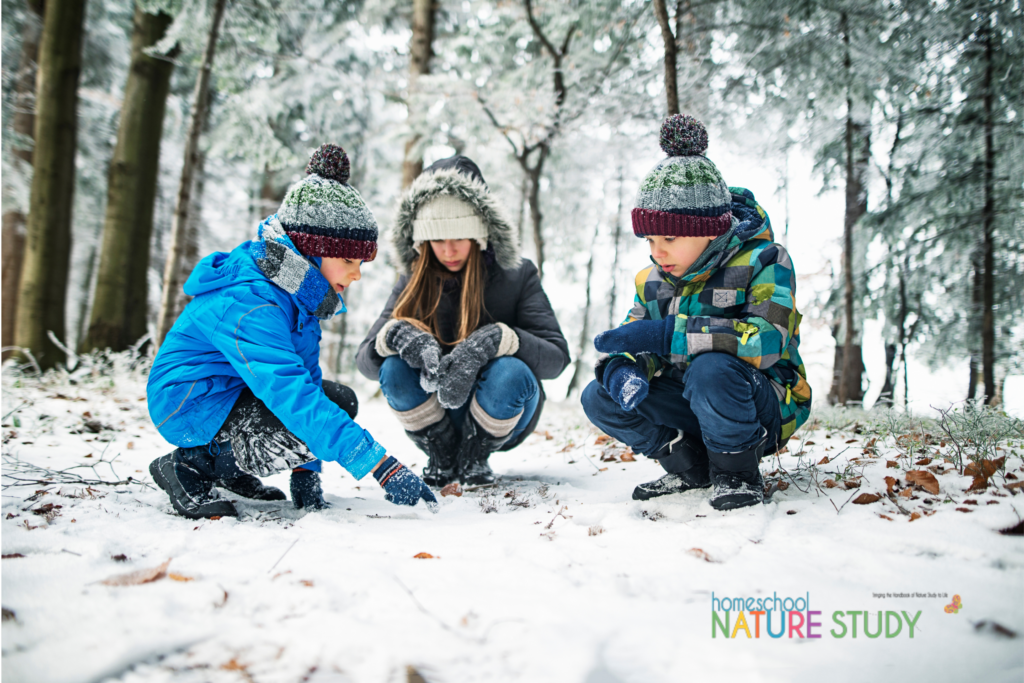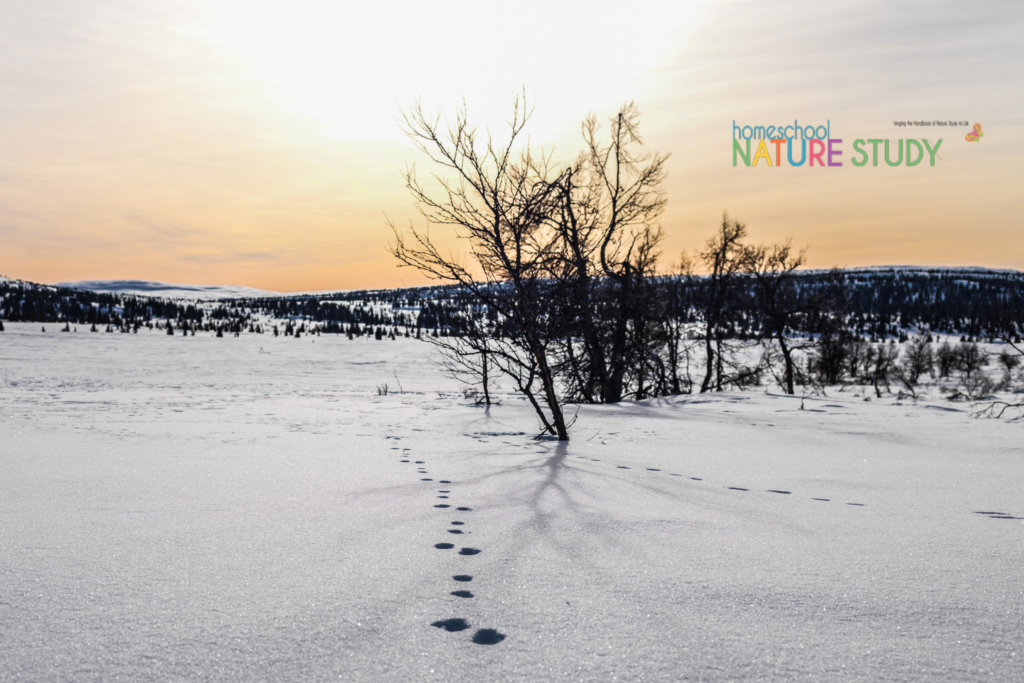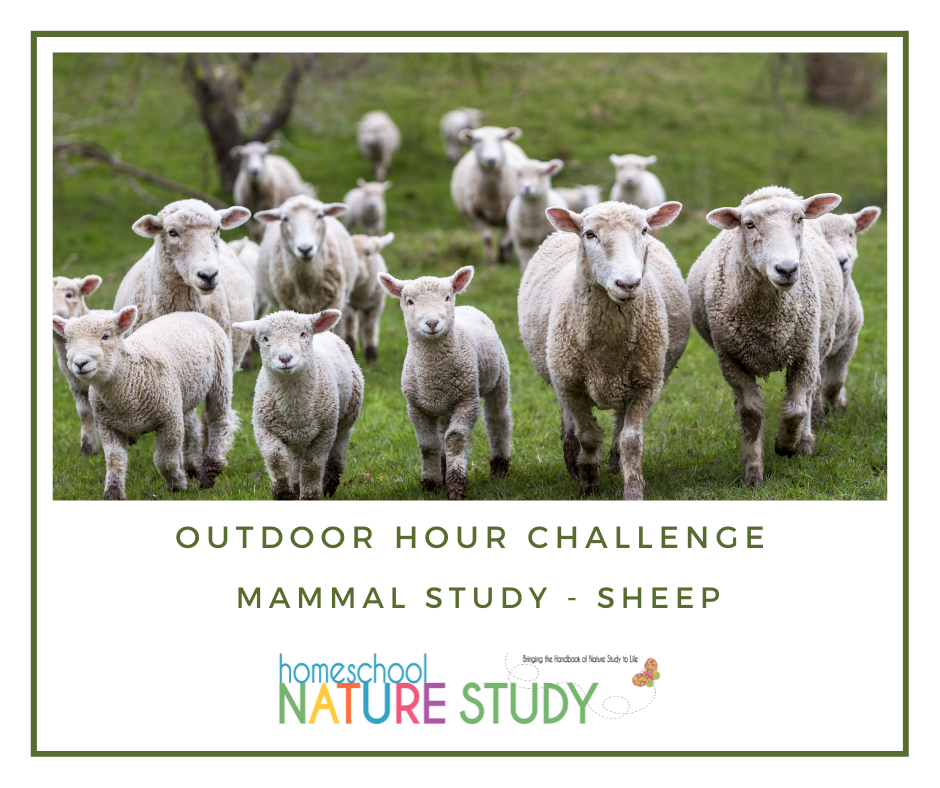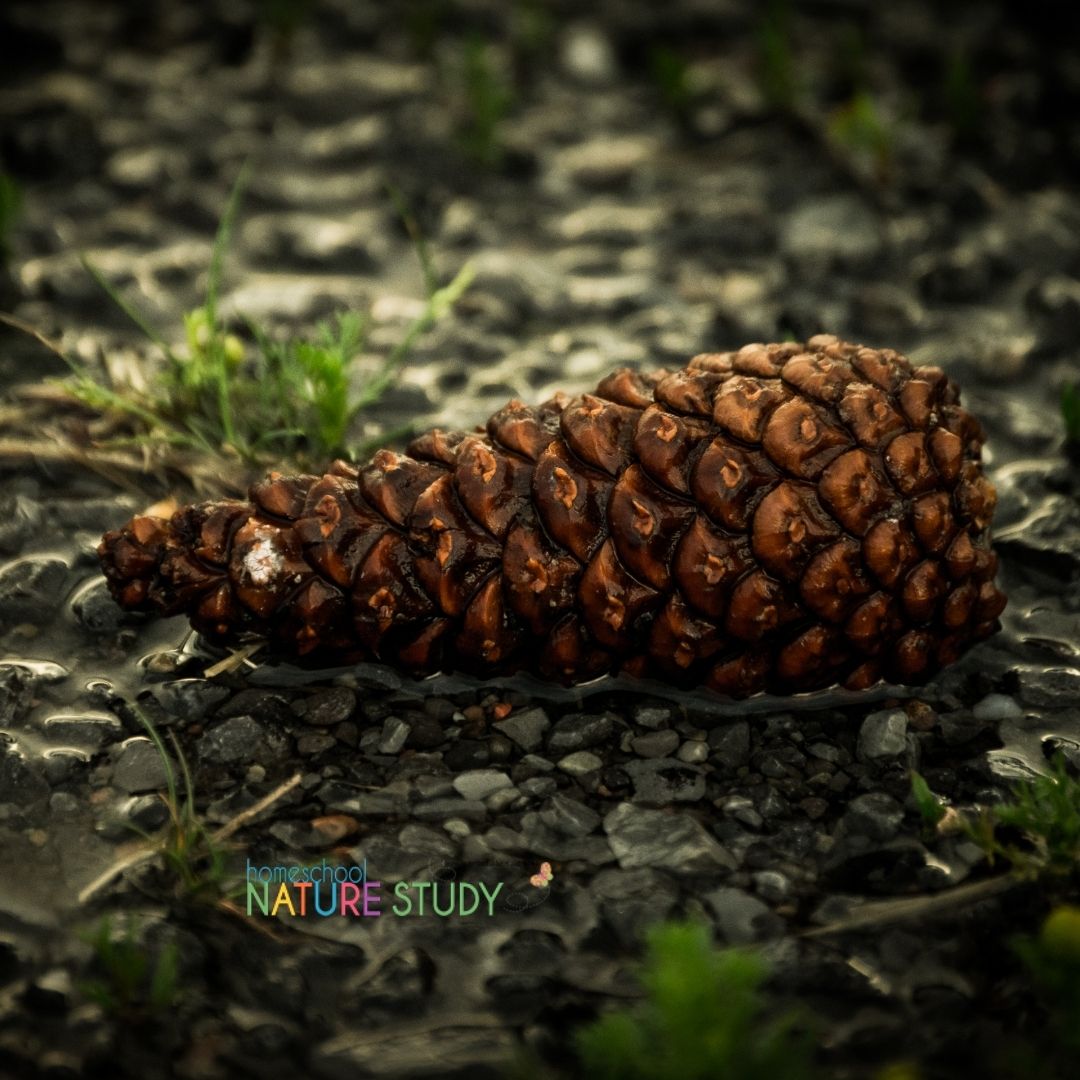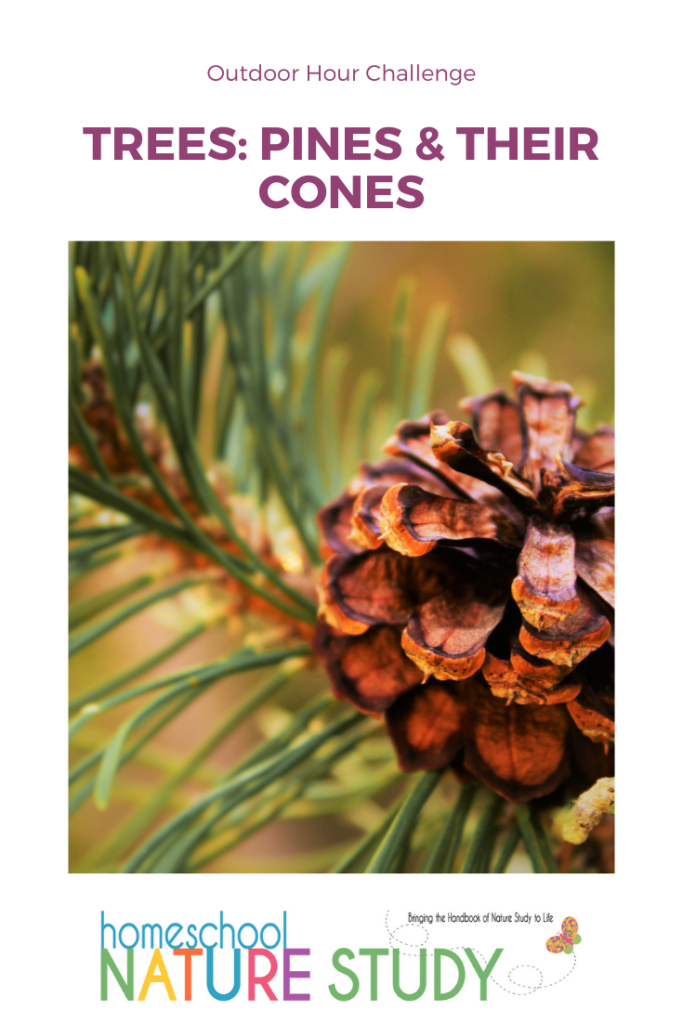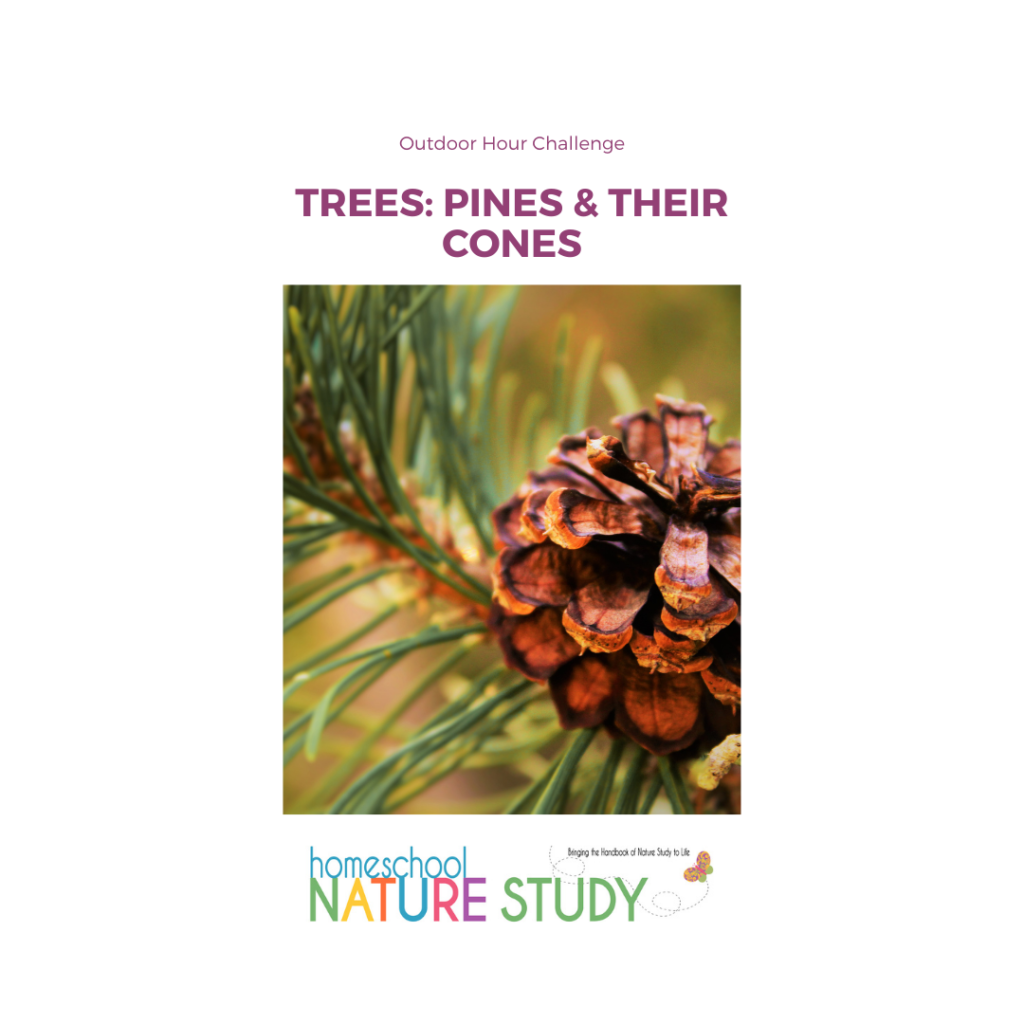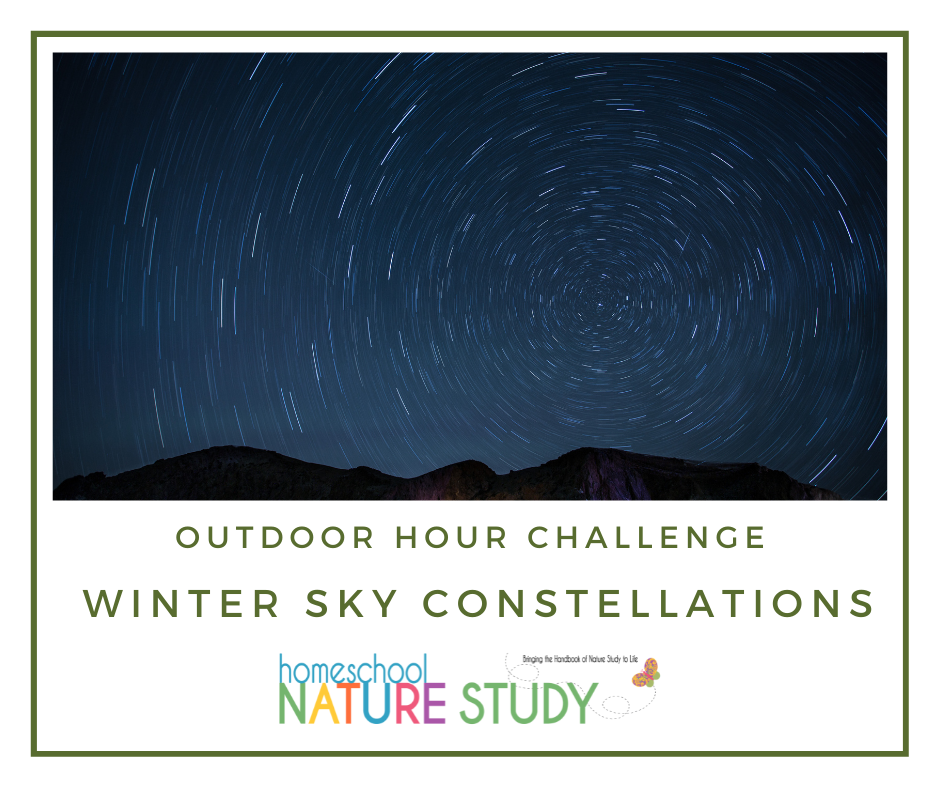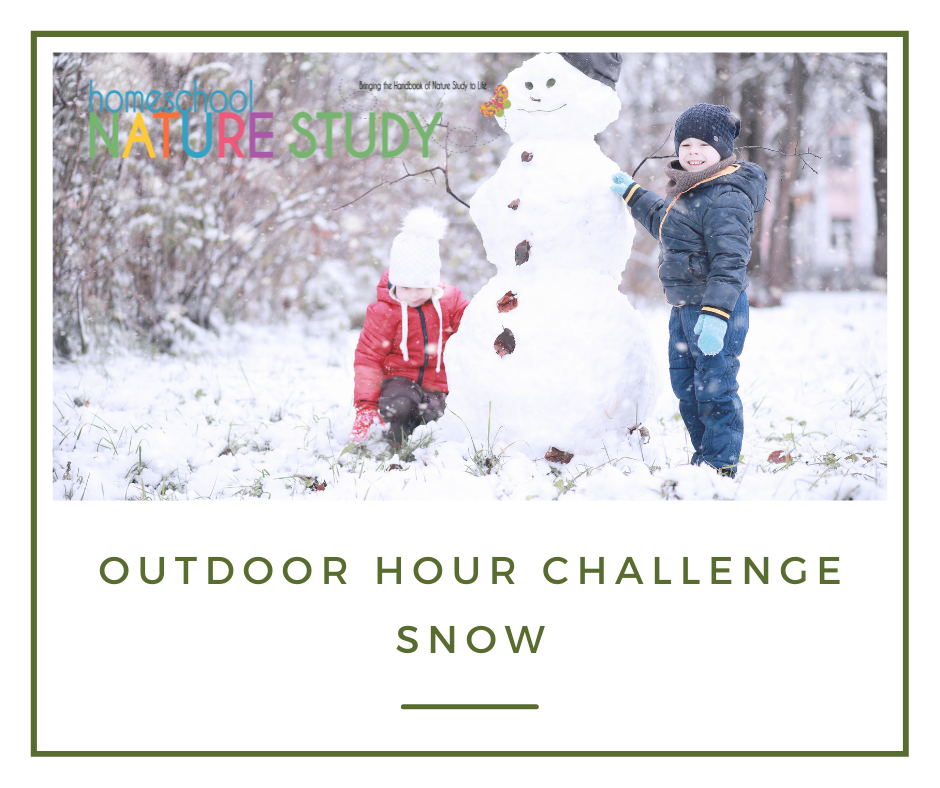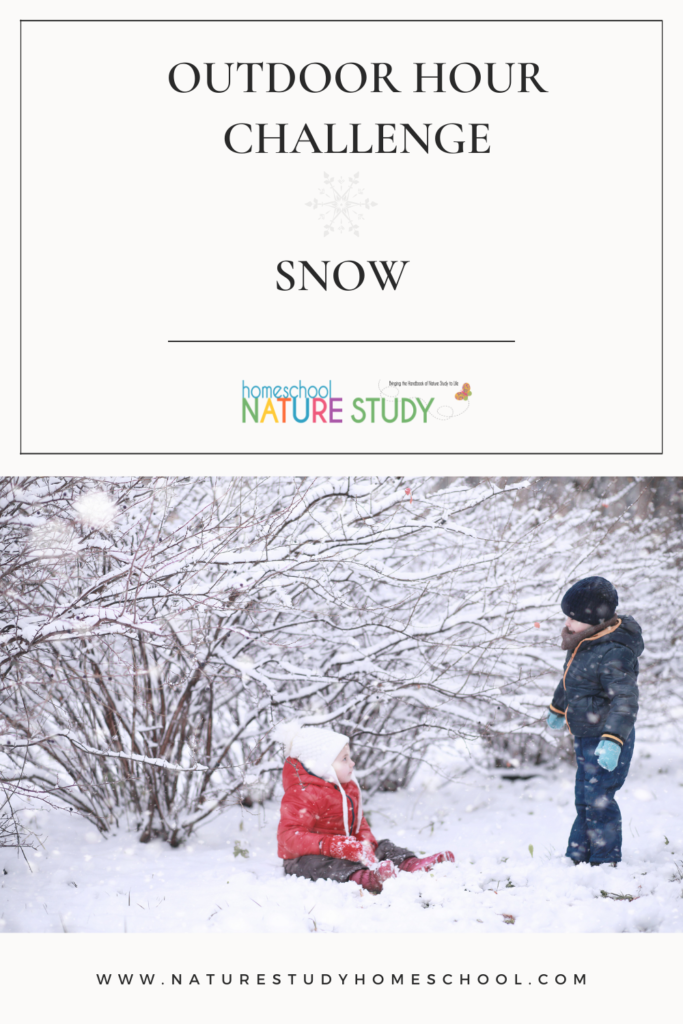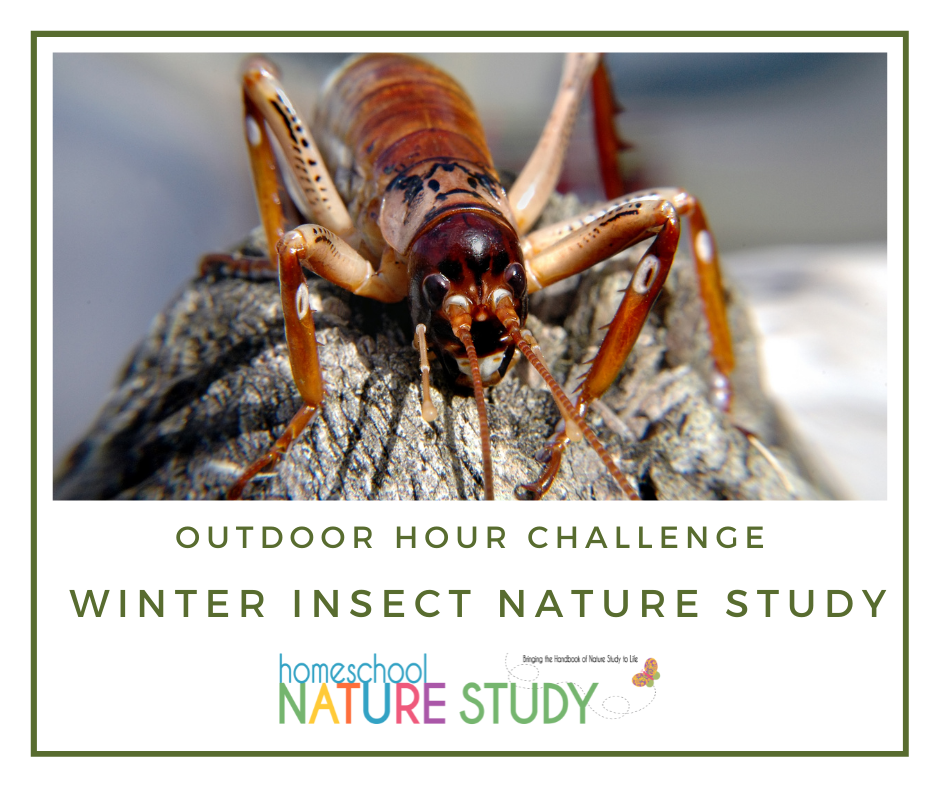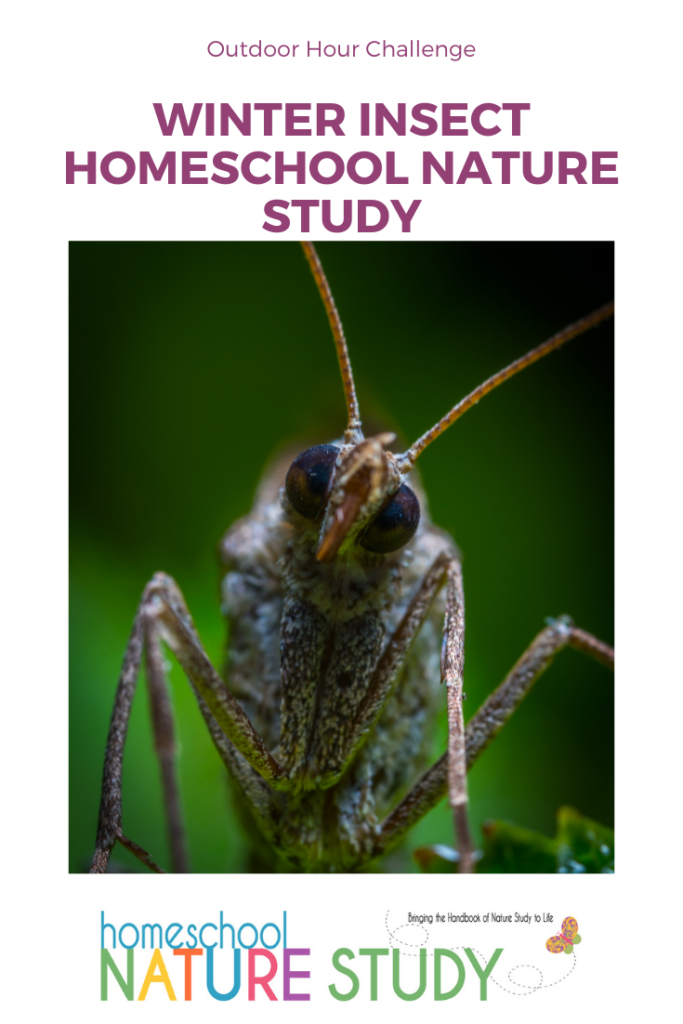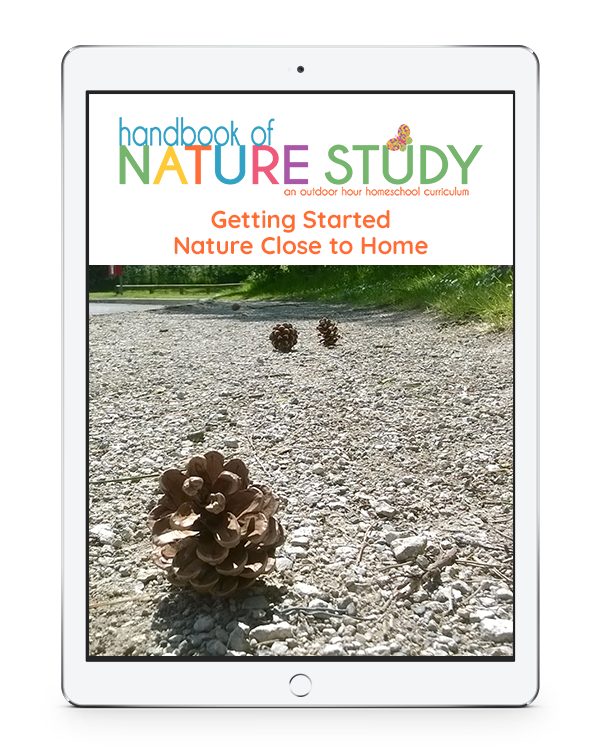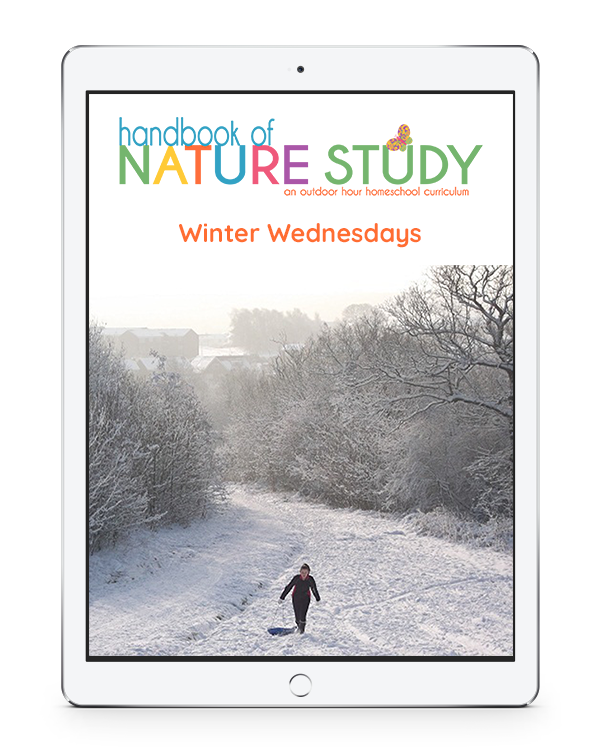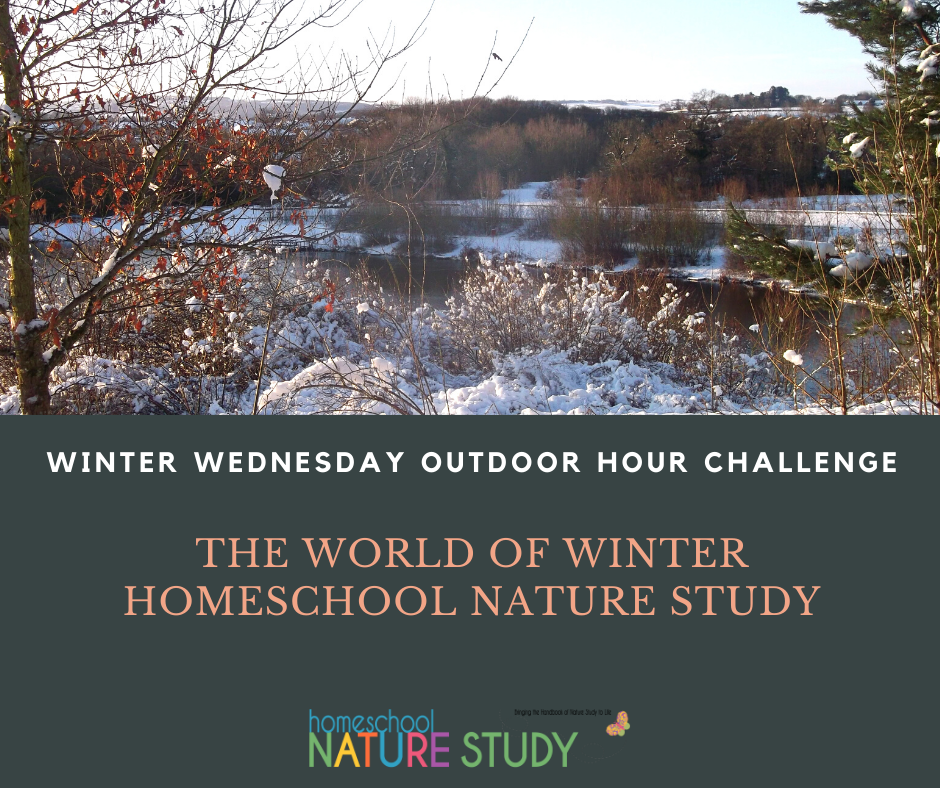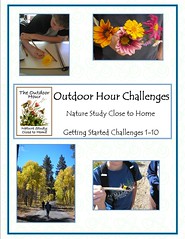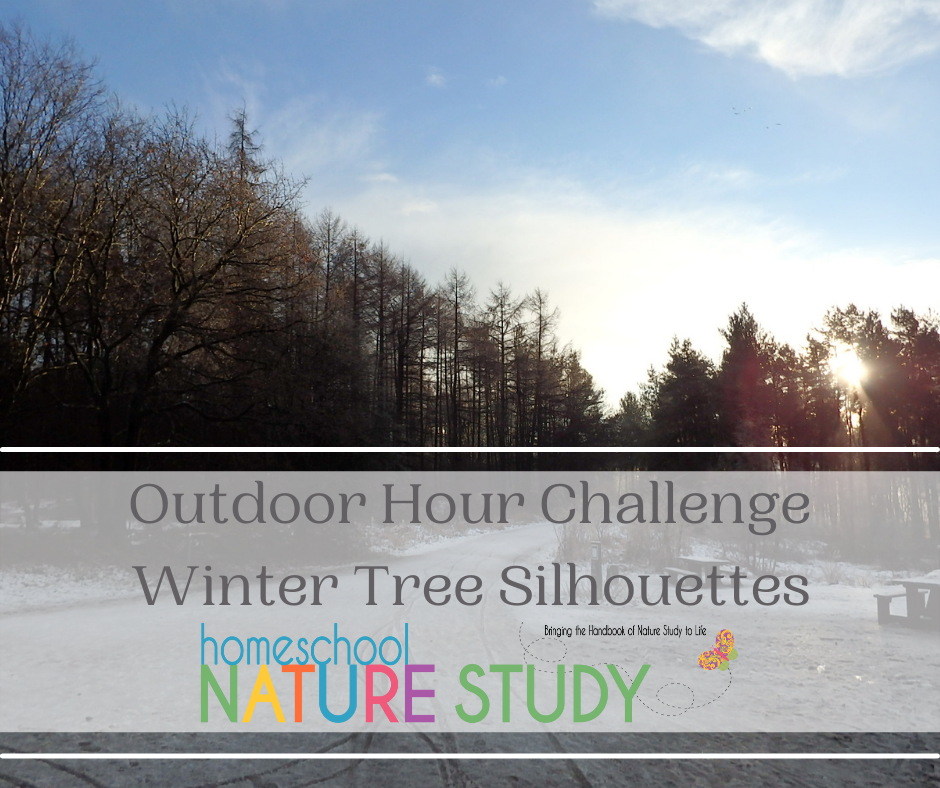
Outdoor Hour Challenge – Winter Tree Silhouettes
This week we are going to be on the lookout for interesting tree silhouettes in our own yard and neighbourhood. Here is the link to the previous challenge: Winter Wednesday – Tree Silhouettes
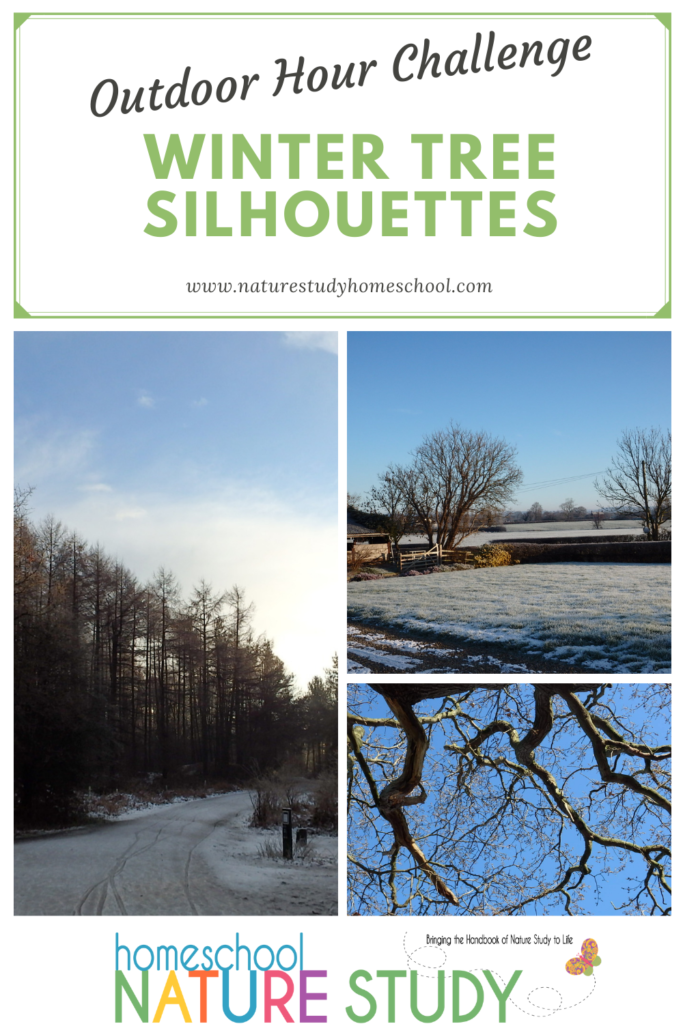
In this challenge, be sure to look for the list of four ideas to use when completing this challenge with your children. You can also work on your Winter Tree Study and your Four Seasons Tree Study.
Homeschool Nature Study: Outdoor Hour Challenge
Special Activity: My Tree is a Living World
This may be a great week to revisit this activity:
My Tree is a Living World

You might also like to see how Tricia’s family enjoyed this winter tree silhouettes challenge. They did a blind contour drawing. They also noticed how paying attention to winter tree silhouettes made them notice the backyard birds!
Getting Started With The Outdoor Hour Challenge In Your Homeschool
Getting Started Suggestion:
If you already own the Getting Started ebook, complete Outdoor Hour Challenge #4. Use the ideas in the challenge to start a focused study of trees with your children. Use the accompanying notebook page to record your outdoor time and your focus area.
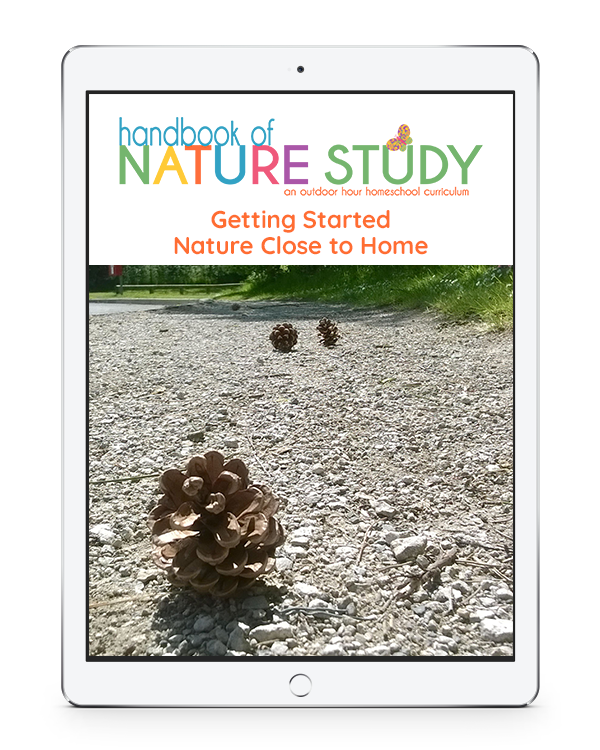
If you do not own the Getting Started in the Outdoor Hour Challenges guide then hop on over to our shop and grab your free copy! We would love to have you join our membership for full access to the new year’s nature study plans as well as access to the curriculum with detailed lesson plans for each weekly challenge.
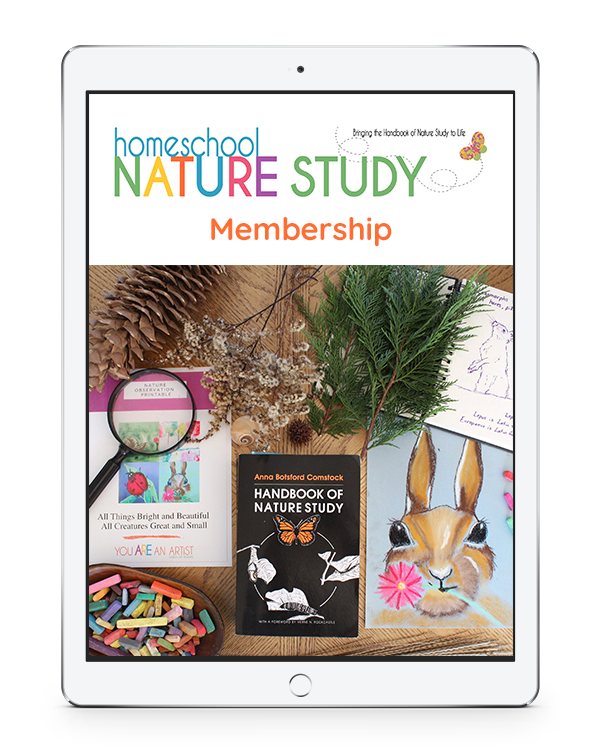
Join Our Homeschool Nature Study Membership for Helpful Tips Year Round
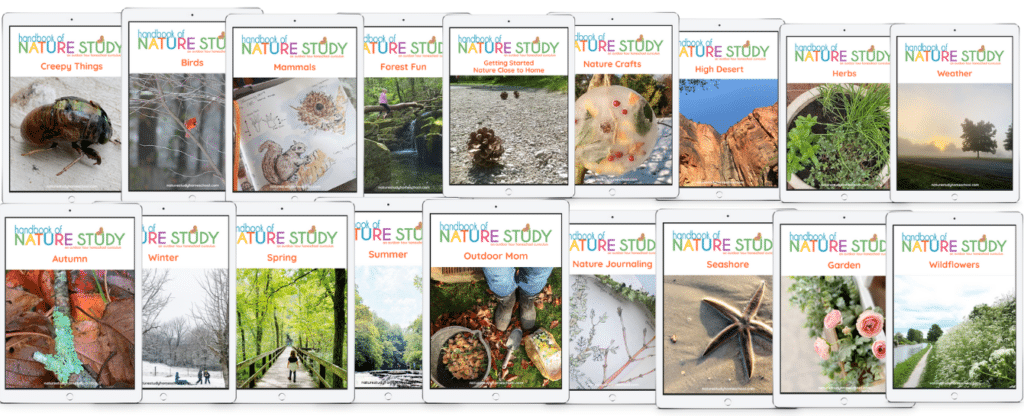
Connect With Our Homeschool Community On Social Media
Did you enjoy this Outdoor Hour Challenge? Be sure to tag us on Instagram @outdoorhourchallenge and use the hashtag #outdoorhourchallenge so we can see and comment!
In addition to this winter tree silhouette challenge, our nature study homeschool members enjoy so much more! Membership includes three sets of Winter Handbook of Nature Study curriculum, additional nature study resources and ideas plus a calendar FULL of easy, daily nature study prompts. This Week’s Outdoor Hour Challenge comes from:
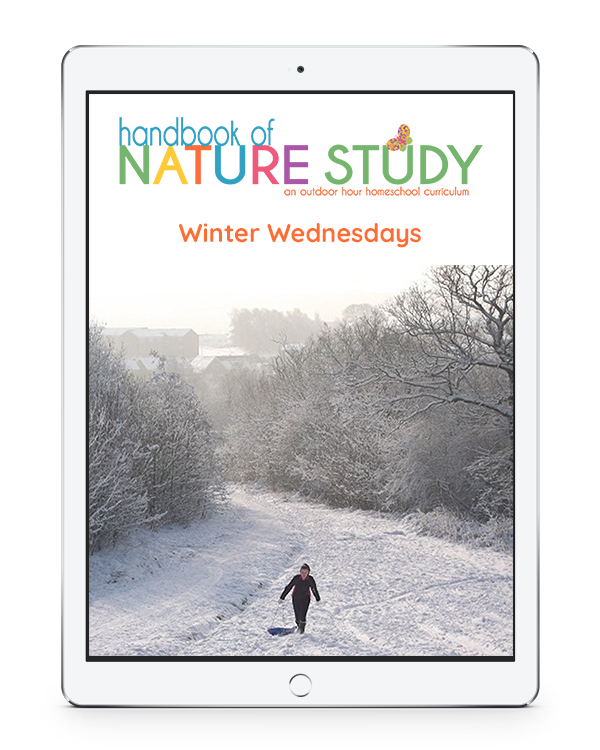
Did you enjoy this Outdoor Hour Challenge Winter Tree Silhouettes? Be sure to tag @outdoorhourchallenge on Instagram and use the hashtag #outdoorhourchallenge so we can see and comment!

